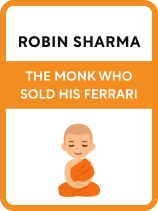

This article is an excerpt from the Shortform book guide to "The Monk Who Sold His Ferrari" by Robin Sharma. Shortform has the world's best summaries and analyses of books you should be reading.
Like this article? Sign up for a free trial here .
Who are the Sages of Sivana in The Monk Who Sold His Ferrari? How do the Great Sages of Sivana help Julian Mantle?
The Sages of Sivana are a group that live in a hidden mountain oasis. They have the keys to living a joyful and fulfilling life, if you are willing to learn.
Read more about the Great Sages of Sivana and what they did for Julian Mantle in The Monk Who Sold His Ferrari.
The Oasis of Enlightenment, Home to the Sages of Sivana
The monk introduced himself as Yogi Raman and brought Julian to Sivana, a small village hidden in the mountains.
Sivana was an incredible place. The buildings were simple huts, but they seemed to be made entirely of roses tied together with twigs and string. The inhabitants all showed the same ageless health and vigor as Raman. None of them spoke, each just offered Julian a simple bow and went about their business purposefully—but calmly, not like Julian’s old hectic lifestyle. The most remarkable thing of all was that everyone there seemed to be perfectly happy.
Julian was welcomed with a feast of fruits and vegetables. He later learned that this diet of fruits and vegetables is one of the keys to the health and happiness of the Sages of Sivana. After the meal, he was taken to what would be his hut. Julian felt hope for the first time in years. He knew, deep down, that Sivana was where he would begin to heal, and that his best days were still ahead of him.
The next day Julian began studying under Yogi Raman. Through study, meditation, and quiet observation of the world, Julian learned many of the secrets of the Sages of Sivana. He learned to master his own thoughts, to take responsibility for his own health—physical, emotional, and spiritual—and how to avoid slipping back into his unbalanced lifestyle of overwork and unhealthy choices.
After only three weeks, Julian noticed the first signs of personal growth: He began noticing the simple beauty in small things like the night sky and a spider’s web. At around the same time, he began experiencing an inner peace he’d never felt before. Julian became happier, more energetic, and physically healthier with every day he spent with the Great Sages of Sivana.
Julian came to realize that the entire world, but most importantly one’s own inner world, is very special. Outward success means nothing without inner health and balance. He came to believe that you can’t love others without first loving yourself, and can’t help others without first helping yourself.
The Fable of the Garden
The System of the Sages of Sivana is based on seven core virtues: mind, purpose, kaizen (roughly translated as self-improvement), self-control, time management, helping others, and living in the moment. The seven virtues are first told through a second-person story:
You are sitting in the most peaceful, most magnificent garden you’ve ever seen. In the center of the garden is a red lighthouse, six stories tall. Suddenly, the door at the base of the lighthouse opens and a nine-foot tall, 900-pound sumo wrestler stumbles out into the middle of the garden. He’s almost completely naked, except for a pink wire cable worn as underwear (we’ll return to this cable in Chapter 10).
The sumo wrestler finds a gold watch and picks it up. He puts on the watch and immediately falls to the ground, unconscious.
Suddenly, the sumo wrestler smells some nearby roses and wakes back up. He jumps to his feet with renewed vigor and looks to the left, and is startled by what he sees. There is a long path encrusted with diamonds stretching into the distance. (Shortform note: Vajrayana, sometimes translated as “Diamond Path,” is a form of Tantric Buddhism.) The sumo wrestler walks along the path, and it leads him to eternal happiness.
Julian admits that he was disappointed when he first heard the story from Yogi Raman. He’d been expecting earth-shattering wisdom, and instead found this story silly, bordering on nonsensical. However, Raman had thought hard about how to teach Sivana’s lessons to Julian, and settled on that short fable. Every one of Sivana’s seven core virtues is within it, in the form of metaphors.
The seven metaphors are: the garden, the lighthouse, the sumo wrestler, the pink wire cable, the stopwatch, the roses, and the path of diamonds.

———End of Preview———
Like what you just read? Read the rest of the world's best book summary and analysis of Robin Sharma's "The Monk Who Sold His Ferrari" at Shortform .
Here's what you'll find in our full The Monk Who Sold His Ferrari summary :
- Why your career success might actually be killing you
- How to live a simple and fulfilling life
- The 10 rituals you should practice for health and healing






